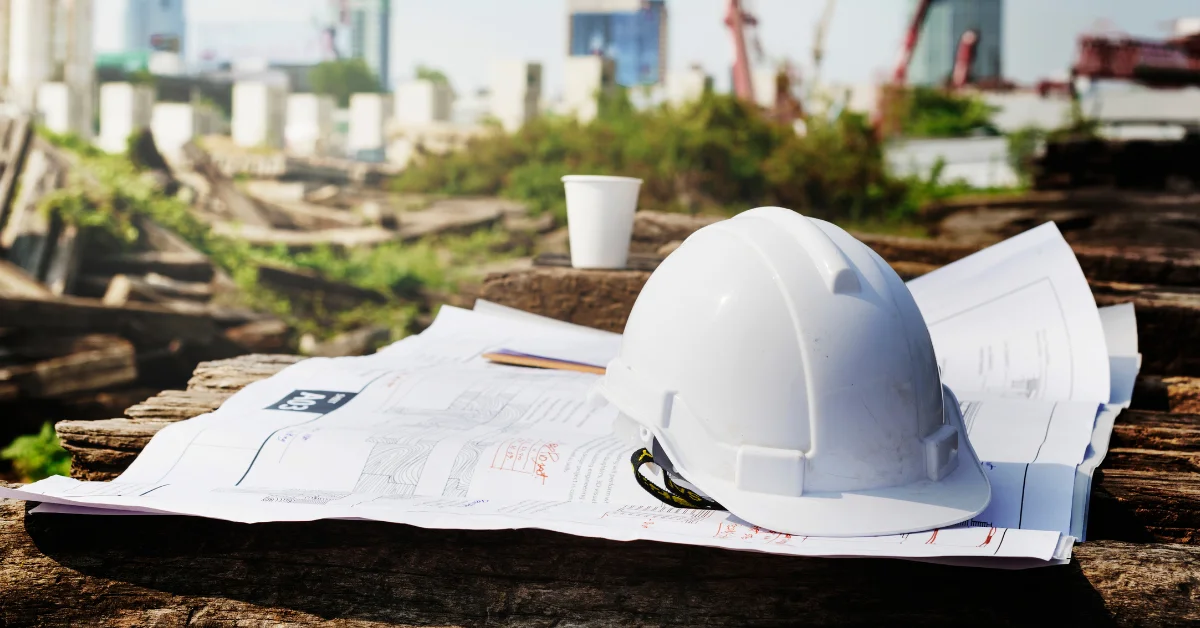RRB JE Civil Syllabus 2025: The Railway Recruitment Board is expected to release the official notification for 2025 soon for the candidates. There is enough time left for candidates to prepare for the examination. Applicants must prepare for subjects like Mathematics, General Science, General Intelligence and Reasoning, General Awareness, Basics of Environment and Pollution Control, and Basics of Computer Applications. However, in this article, we will cover all the important topics and details of the RRB JE Civil Syllabus for the applicants
RRB JE Civil Syllabus 2025
RRB conducts the CBT 1 and 2 examinations to recruit candidates for the posts of Junior Engineer (JE), Junior Engineer in Information Technology, Depot Material Superintendent (DMS), and Chemical & Metallurgical Assistant (CMA). The CBT 1 is conducted for 100 marks, whereas the CBT 2 exam is held for 150 marks. The official RRB JE Exam Date will be released after the notification is out.
RRB JE Civil Syllabus Overview
It is very important to know the basic overview details of the JE exam. Given below are the details that were released in the previous year RRB JE Notification:
| Particulars | Details |
| Board | Railway Recruitment Board (RRBs) |
| Exam Name | RRB JE 2025 |
| Vacancies | To be released |
| Name of the Posts | Junior Engineer (JE), Junior Engineer (IT), Depot Materials Superintendent (DMS), Chemical & Metallurgical Assistant (CMA) |
| No. of Questions | CBT 1: 100 CBT 2: 150 |
| Duration | CBT 1: 90 minutes CBT 2: 120 minutes |
| Marking Scheme | 1 mark |
| Negative Marking | ⅓ mark |
| Selection Process | – First Stage of CBT – Second Stage of CBT – Document Verification – Medical Examination |
| Official Website | indianrailways.gov.in |
RRB JE CE Syllabus 2025
The RRB JE Syllabus for Civil Engineering consists of subjects such as engineering mechanics, building materials, building maintenance, building drawing, and more. Given below are the details for the applicants:
| Name of Subjects | Name of Topics |
| Engineering Mechanics | Force (resolution of force, moment of force, force system, composition of forces), Equilibrium, Friction, Centroid and Center of gravity, Simple machines. Building components (substructure, superstructure), type of structure (load bearing, framed and composite structures). |
| Building Materials | Masonry materials (stones, bricks, and mortars), Timber, and miscellaneous materials (glass, plastic, fiber, aluminum steel, galvanized iron, bitumen, PVC, CPVC, and PPF). |
| Construction of Substructure | Job layout, earthwork, foundation (types, dewatering, cofferdams, bearing capacity). |
| Construction of Superstructure | Stone masonry, brick masonry, Hollow concrete block masonry, composite masonry, cavity wall, doors and windows, vertical communication (stairs, lifts, escalators), scaffolding, and shoring. |
| Building Finishes | Floors (finishes, process of laying), walls (plastering, pointing, painting), and roofs (roofing materials including RCC). |
| Building Maintenance | Cracks (causes, type, repairs- grouting, uniting, epoxy, etc.), settlement (causes and remedial measures), and re-baring techniques. |
| Building Drawing | Conventions (type of lines, symbols), planning of building (principles of planning for residential and public buildings, rules and bylaws), drawings (plan, elevation, section, site plan, location plan, foundation plan, working drawing), perspective drawing. |
| Concrete Technology | Properties of various types/grades of cement, properties of coarse and fine aggregates, properties of concrete (water-cement ratio, properties of fresh and hardened concrete), Concrete mix design, testing of concrete, quality control of concrete (batching, formwork). |
| Surveying | Types of survey, chain and cross staff survey, compass survey, leveling, contouring, area and volume measurements, plane table survey, theodolite survey, Tacheometric survey, curves, advanced survey equipment, aerial survey, and remote sensing. |
| Computer-Aided Design | CAD Software (AutoCAD, Auto Civil, 3D Max, etc.), CAD commands, generation of the plan, elevation, section, site plan, area statement, and 3D view. |
| Geo-Technical Engineering | Application of Geo-Technical Engineering in design, physical properties of soil, permeability of soil and seepage analysis, shear strength of soil, bearing capacity of soil, compaction and stabilization of soil, site investigation, and subsoil exploration. |
| Hydraulics | Properties of fluid, hydrostatic pressure, measurement of liquid pressure in pipes, fundamentals of fluid flow, flow of liquid through pipes, flow through open channels, flow measuring devices, and hydraulic machines. |
| Irrigation Engineering | Hydrology, investigation, and reservoir planning, percolation tanks, diversion headworks. |
| Mechanics of Structures | Stress and strain, shear force and bending moment, moment of inertia, stresses in beams, analysis of trusses, strain energy. |
| Theory of Structures | Direct and bending stresses, slope and deflection, fixed beam, continuous beam, moment distribution method, columns. |
| Design of Concrete Structures | Working Stress method, Limit State method, analysis, and design of singly reinforced and doubly reinforced sections, shear, bond and development length, analysis and design of T Beam, slab, axially loaded column, and footings. |
| Design of Steel Structures | Types of sections, grades of steel, strength characteristics, IS Code, Connections, Design of tension and compression members, steel roof truss, beams, and column bases. |
| Transportation Engineering | Railway Engineering (alignment and gauges, permanent way, railway track geometrics, branching of tracks, stations and yards, track maintenance), Bridge engineering, Tunnel engineering. |
| Highway Engineering | Road Engineering, investigation for road projects, geometric design of highways, construction of road pavements and materials, traffic engineering, hill roads, drainage of roads, maintenance, and repair of roads. |
| Environmental Engineering | Environmental pollution and control, public water supply, domestic sewage, solid waste management, environmental sanitation, and plumbing. |
| Advanced Construction Techniques and Equipment | Fibers and plastics, artificial timber, advanced concreting methods, formwork, prefabricated construction, soil reinforcing techniques, hoisting and conveying equipment, earth-moving machinery, concrete mixers, stone crushers, pile driving equipment. |
| Estimating and Costing | Types of estimates (approximate, detailed), mode of measurements, and rate analysis. |
| Contracts and Accounts | Types of engineering contracts, Tender and tender documents, payment, and specifications. |
Preparation Tips for RRB JE Exam 2025
We have mentioned some important preparation tips for the upcoming RRB JE Exam 2025. Candidates must follow these tips to score well and qualify for the exam:
- Understand the complete civil engineering syllabus properly
- Familiarize yourself with the latest exam pattern
- Attempt mock tests regularly
- Solve RRB JE Previous Year Papers to understand the difficulty level of questions
- Identify your weak areas through mock tests and work on them
- Follow the best books and study materials for preparation
- Avoid distractions during the exam preparation
We hope you received a good understanding of the RRB JE Syllabus 2025. To read more such articles, visit the Oliveboard website.
RRB JE Civil Syllabus 2025 FAQs
The main subjects include Engineering Mechanics, Building Materials, Construction of Substructure, Construction of Superstructure, Concrete Technology, Surveying, Geo-Technical Engineering, Hydraulics, Mechanics of Structures, Theory of Structures, Design of Concrete Structures, and more.
Yes, the syllabus covers Building Drawing, including conventions, planning of buildings, drawing plans, elevations, sections, site plans, location plans, foundation plans, and perspective drawings.
Yes, Surveying is an important part of the syllabus, covering chain and cross-staff survey, compass survey, leveling, contouring, plane table survey, theodolite survey, Tacheometric survey, and advanced surveying equipment.
Yes, Computer-Aided Design (CAD) is part of the syllabus, focusing on CAD software like AutoCAD and commands for generating plans, elevations, sections, site plans, and 3D views.
Yes, Environmental Engineering is included, covering environmental pollution and control, public water supply, domestic sewage, solid waste management, environmental sanitation, and plumbing.
- RRB JE Vacancy 2025 Out, Check New Vacancies for 2,588 Posts
- रेलवे परीक्षा की तैयारी करें, सारी जानकारी यहां देखें
- Why RRB JE Mechanical and Electrical Post is Best for Selection?
- Important RRB JE Computer Questions, Know Difficulty Level
- How RRB JE 2025 Preparation Can Help You Crack PSU, SSC JE?
- Benefits of Preparing RRB JE Notes, Know the Topics to Focus

Hello! This is Arijit Dutta. I am a skilled Content Writer at Oliveboard with nearly 3+ years of experience in crafting engaging, informative, and exam-focused content for the Railways Domain. With a strong command of language and a keen understanding of learner needs, I contribute significantly to Oliveboard’s mission of delivering high-quality educational resources. Passionate about clear communication and continuous learning, I consistently create content that helps government job aspirants achieve their goals. Outside of work, I enjoy playing cricket and listening to music, which helps me stay balanced and creative in my professional journey.
